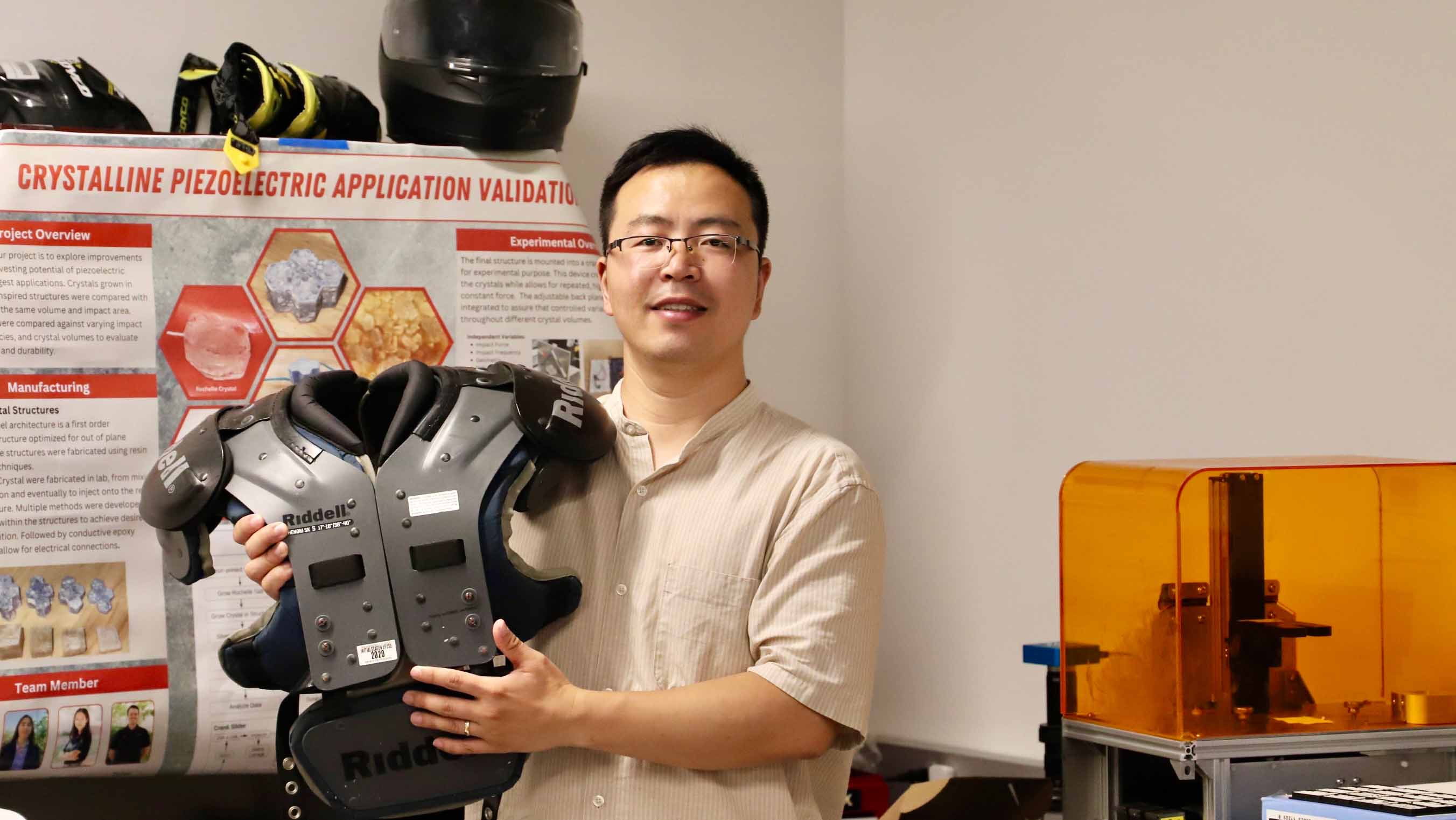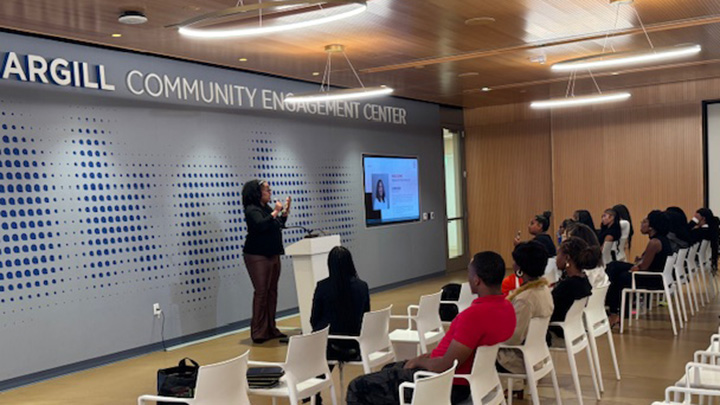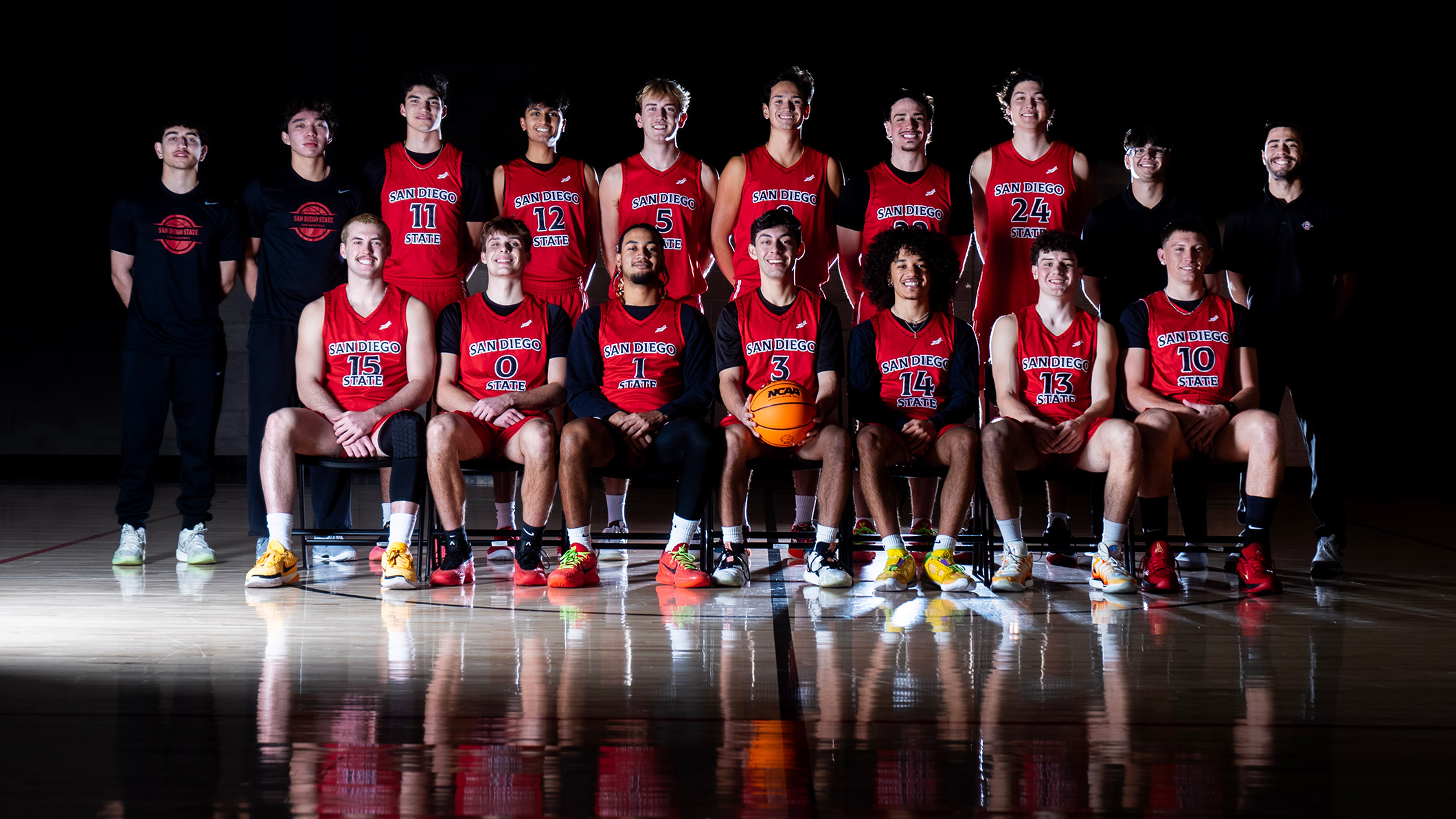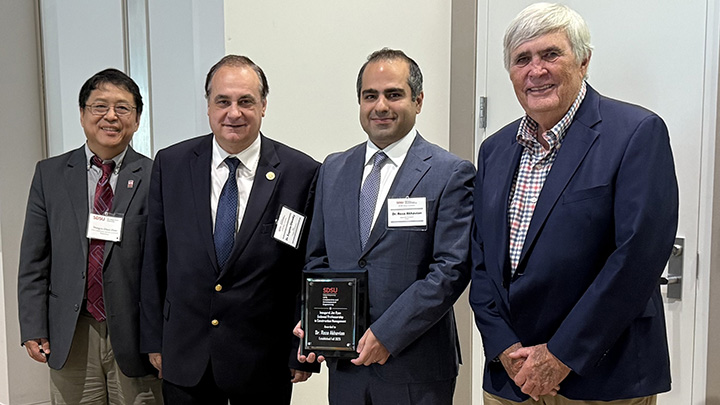Early career award recipient looks to nature for innovation
The grant for Yang Yang in the SDSU College of Engineering comes from a program that often provides the foundation for decades of research.

“Nature will be our teacher.”
That’s a guiding philosophy for Yang Yang, an assistant professor in San Diego State University’s Department of Mechanical Engineering and one of the latest in a long line of NSF CAREER award recipients at SDSU.
Keep Yang's belief system in mind as you consider one of the ocean’s most unusual creatures, the cuttlefish: three hearts, W-shaped eye pupils, and bones that are ultralight but fantastically strong. Cuttlebone is characterized by a complex, wavy microstructure; it has evolved over tens of millions of years to maximize energy absorption and survival in underwater pressure at depths of up to 600 meters, where plastic containers or even unreinforced vessels would collapse.
Wouldn’t it be cool if you could design a sports helmet or other materials with the same properties as cuttlebone?
Buoyed by the CAREER federal grant ― which the National Science Foundation describes as its most prestigious award for early-career faculty ― Yang aims to follow nature’s rules and help find out by using a technique called bioinspired 3D printing.
“There is a critical demand for lightweight, high impact-resistant and energy absorbing materials across various sectors, including sports, medical, and consumer electronics,” Yang wrote in a 15-page proposal to NSF describing his plans. Complex structures in the components of cuttlefish, nacre (a composite material produced by mollusks) and other marine organisms, he said, “offer inspiration for the design of next-generation products due to their low density, high strength and toughness.”
A novel 3D printing process developed as part of his research, Yang said, could be a better way of reproducing the high impact-resistance of these structures than transitional casting and molding techniques.
“We can use it, for example, in sports,” Yang said. Modern helmets replace foam with a honeycomb structure to absorb energy but the focus of his research, heterostructured hybrid materials, could make them even stronger.
Additional potential applications could include biomedical engineering, such as wearable devices to help bones heal.
Bioinspired 3D printing emerged in the early 2000s. A 2020 paper on recent progress in the field mentions developments inspired by wheat awn, abalone shells, plant stems and wood. Yang wrote about a preliminary phase of his work on the topic in an October 2023 article in the journal Nature Communications.
Attracted by a job opening announcement that seemed to match his research interests, Yang came to SDSU in January 2020 after completing a post-doctoral fellowship at the University of Southern California.
His office on the fourth floor of the Engineering building is appropriately decorated with seashells, 3D prints of a seahorse and starfish, and his own drawing of the Chinese character for “lucky,” created for a Chinese New Year festival and posted both on his door and behind his desk.
Five-year grant
Announced in June, the Faculty Early Career Development Program award carries a grant of more than $637,000, some of which Yang said he will devote to hiring one or two Ph.D. students to assist in his first-floor Additive Manufacturing & Advanced Materials lab. The award is for a five year period; Yang’s proposal to NSF actually outlines work he hopes to perform over the next 20 years.
Yang previously received more than $386,000 in NSF support for his work. This was his first try for a CAREER award.
As the name suggests, the NSF CAREER award often provides the basis for an entire career of research. NSF records show 36 recipients at SDSU since 1997 (including at least one who was hired by SDSU from a different university after receiving the award). All but two of them are still at SDSU.
They include Eugene Olevsky, recipient of a 2000 award for his now internationally recognized work in a field of materials processing called sintering, who as dean of engineering supported Yang’s application.
“Dr. Yang’s NSF CAREER Award is a remarkable achievement that reflects both his innovative research in bioinspired 3D printing and his dedication to advancing engineering at SDSU,” Olevsky wrote in a message to NewsCenter. “As a past CAREER awardee, I know how transformative this recognition can be in supporting early-career faculty and building impactful research programs.
“This accomplishment brings great distinction to the College of Engineering and to SDSU, and I am proud to see Dr. Yang’s work recognized at the national level.”



